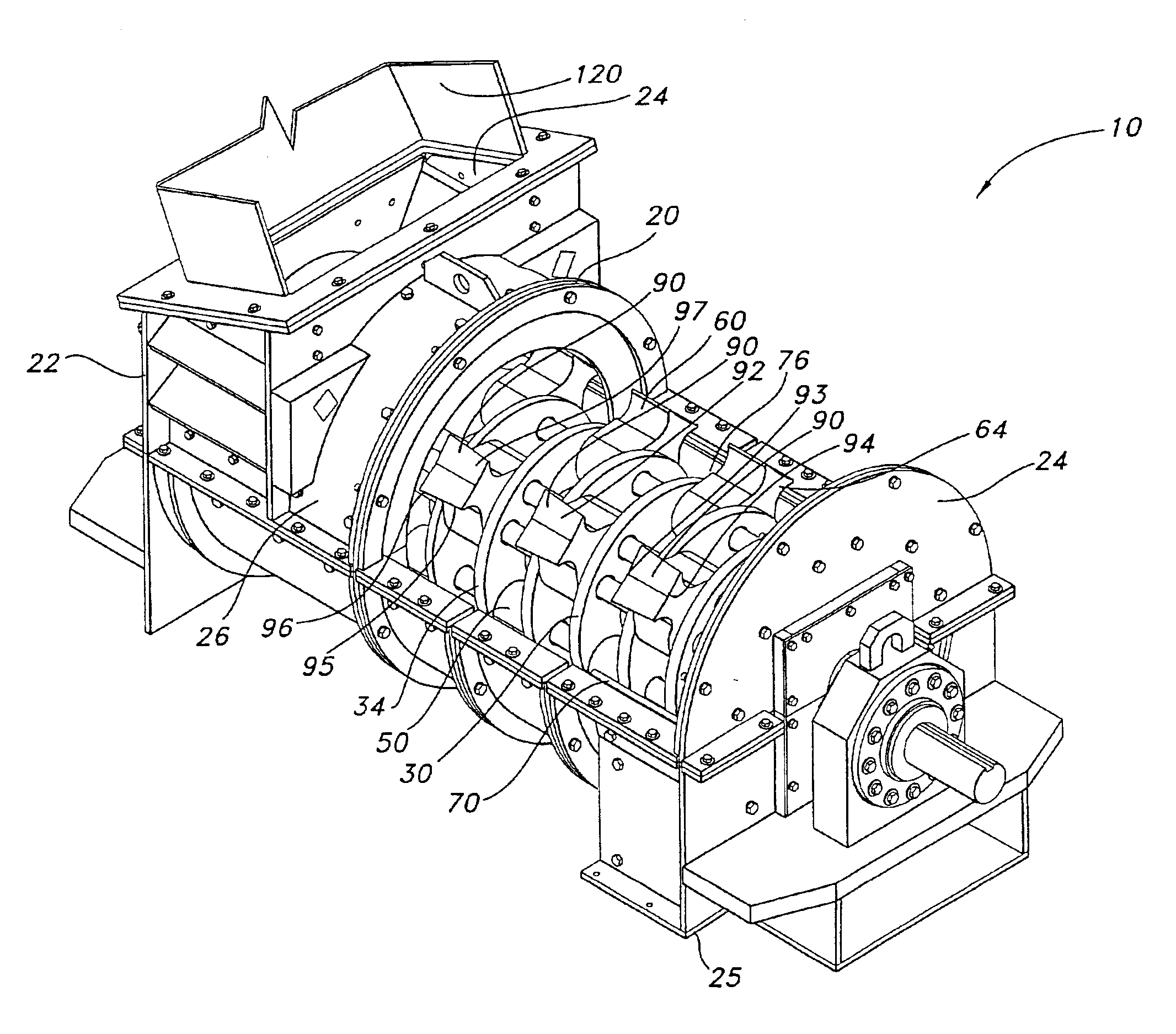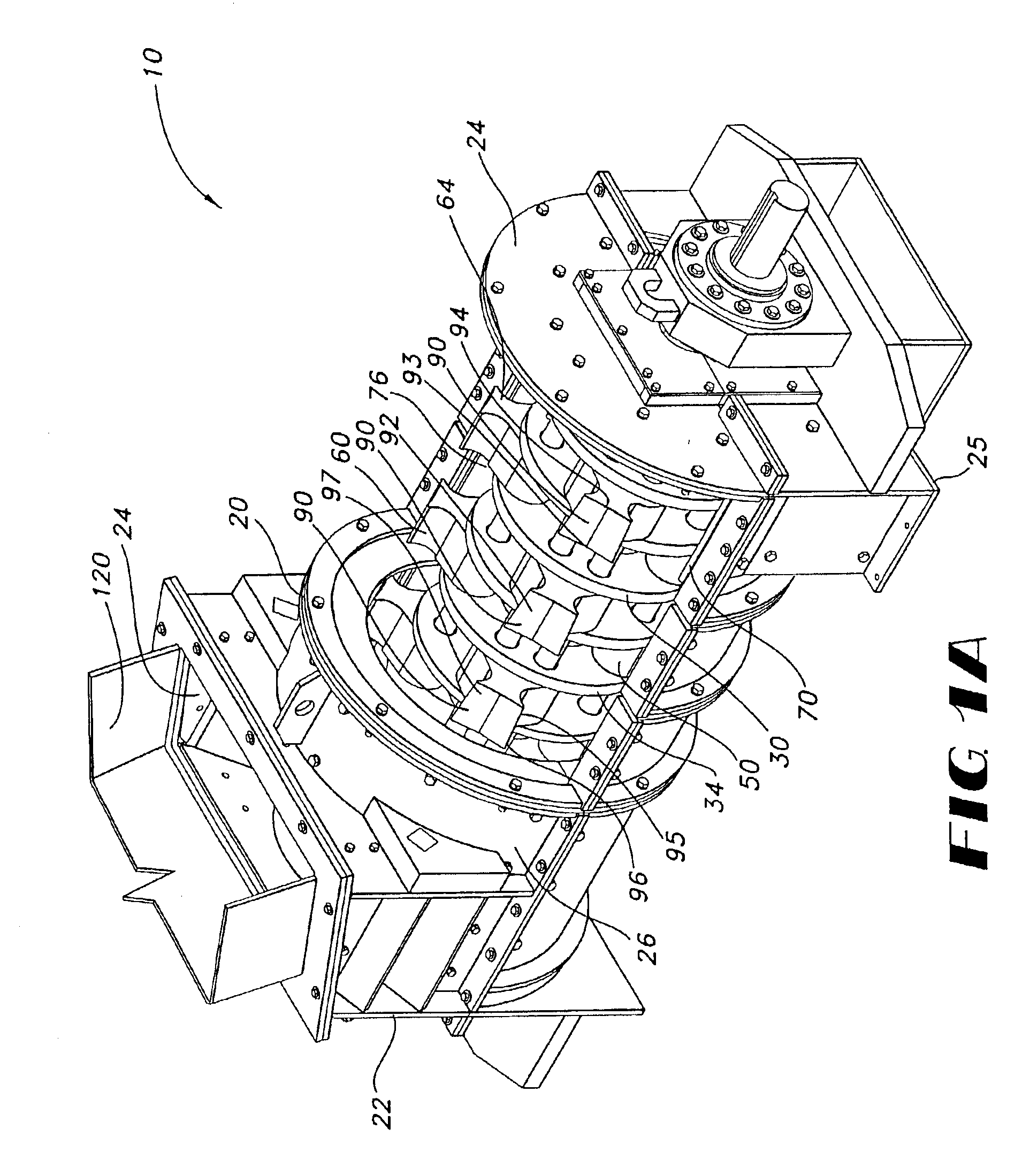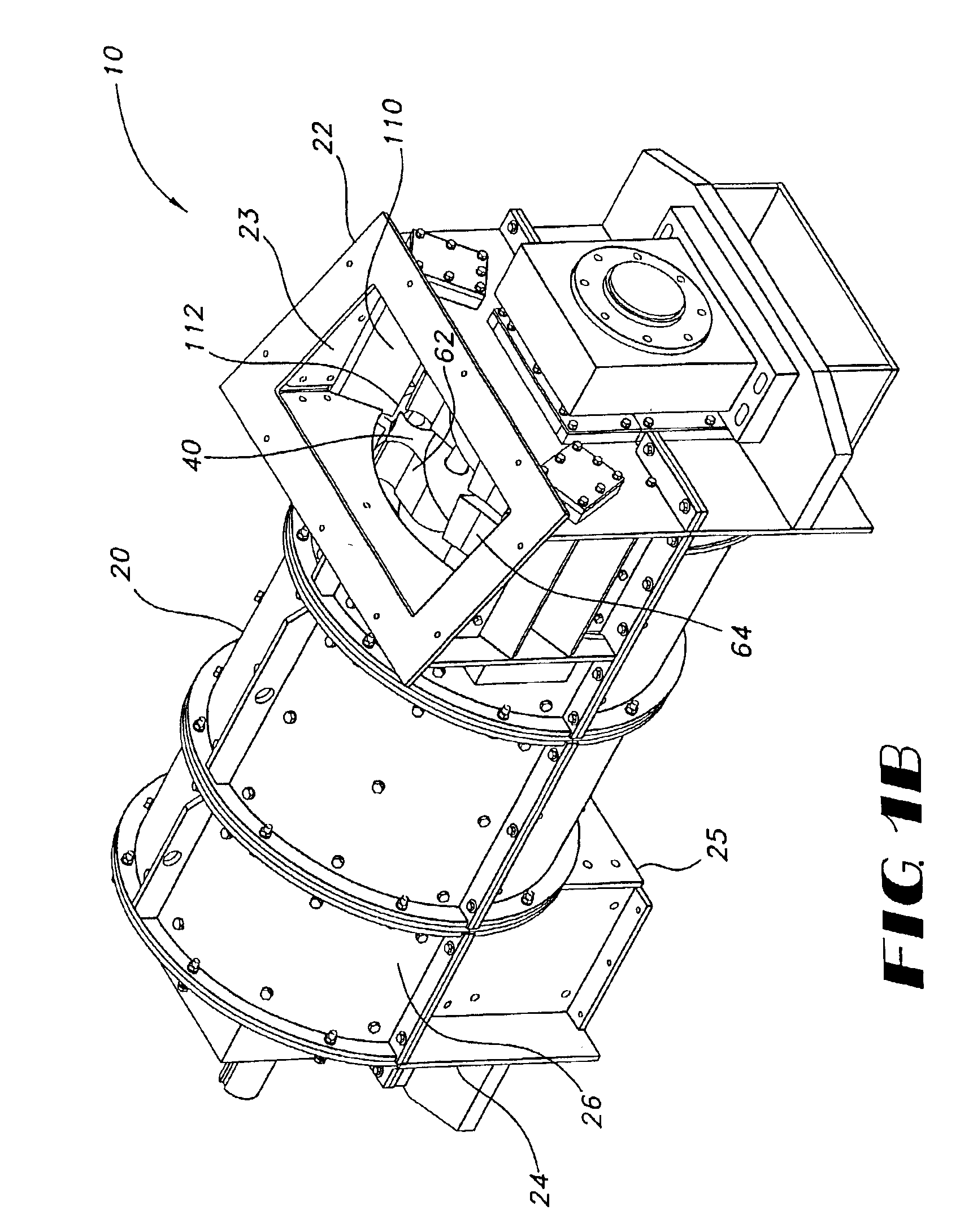Hammermill
a hammermill and hammer head technology, applied in the field of impact grinders and hammer heads, can solve the problems of material short circuit, material being reduced, art grates or screens being restricted and plugged,
- Summary
- Abstract
- Description
- Claims
- Application Information
AI Technical Summary
Benefits of technology
Problems solved by technology
Method used
Image
Examples
Embodiment Construction
[0025]The present invention is more particularly described in the following exemplary embodiments that are intended as illustrative only since numerous modifications and variations therein will be apparent to those skilled in the art. As used herein, “a,”“an,” or “the” can mean one or more, depending upon the context in which it is used. The preferred embodiments are now described with reference to the figures, in which like reference characters indicate like parts throughout the several views.
[0026]The present invention comprises a hammermill 10 as shown generally in FIGS. 1A-10. The hammermill 10 of the present invention is adapted for reducing wood or similar fibrous materials (i.e., for use as a hammermill 10 which is typically referred to as a hog or a wood / bark hog), but one skilled in the art will appreciate that the design features of the present invention are applicable to comminute other types of friable materials, such as coal, minerals, agricultural products, and the lik...
PUM
 Login to View More
Login to View More Abstract
Description
Claims
Application Information
 Login to View More
Login to View More - R&D
- Intellectual Property
- Life Sciences
- Materials
- Tech Scout
- Unparalleled Data Quality
- Higher Quality Content
- 60% Fewer Hallucinations
Browse by: Latest US Patents, China's latest patents, Technical Efficacy Thesaurus, Application Domain, Technology Topic, Popular Technical Reports.
© 2025 PatSnap. All rights reserved.Legal|Privacy policy|Modern Slavery Act Transparency Statement|Sitemap|About US| Contact US: help@patsnap.com



